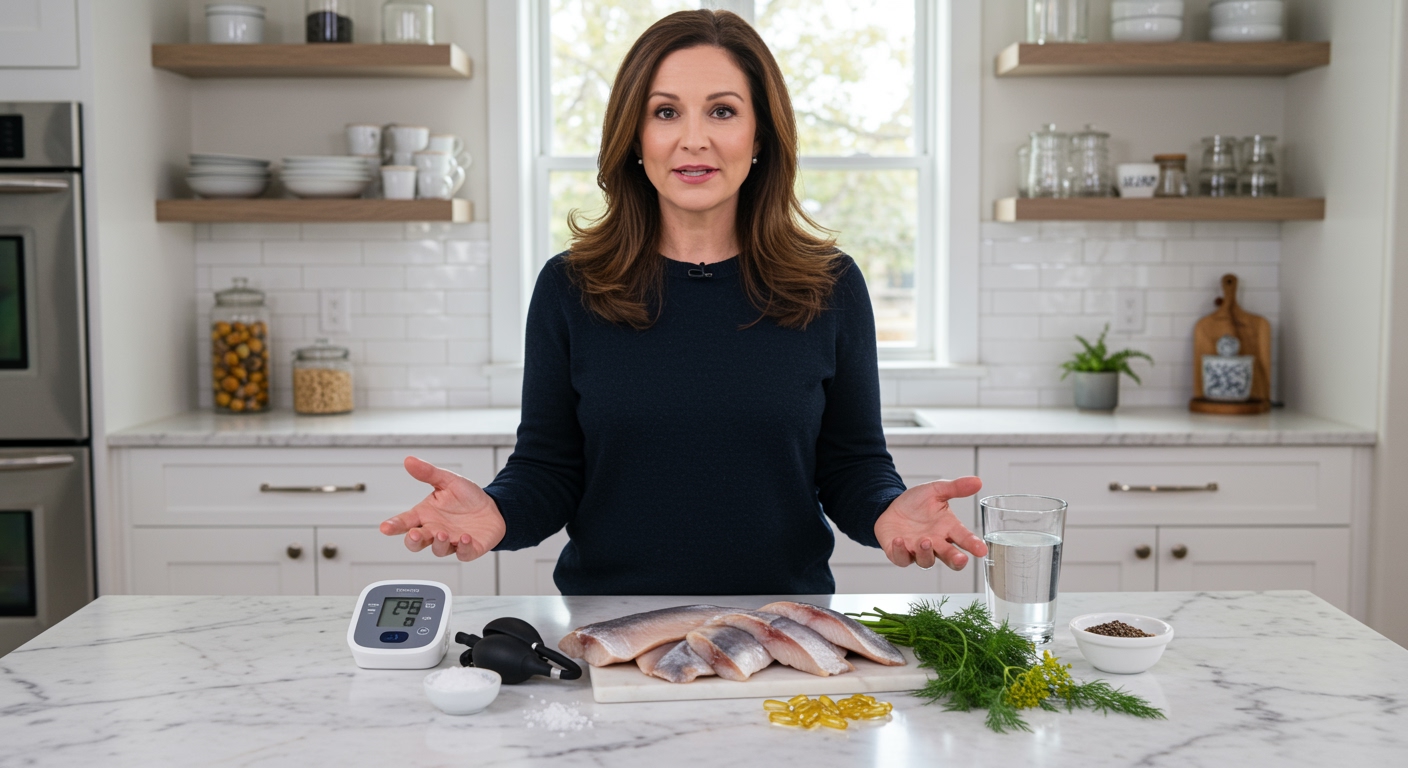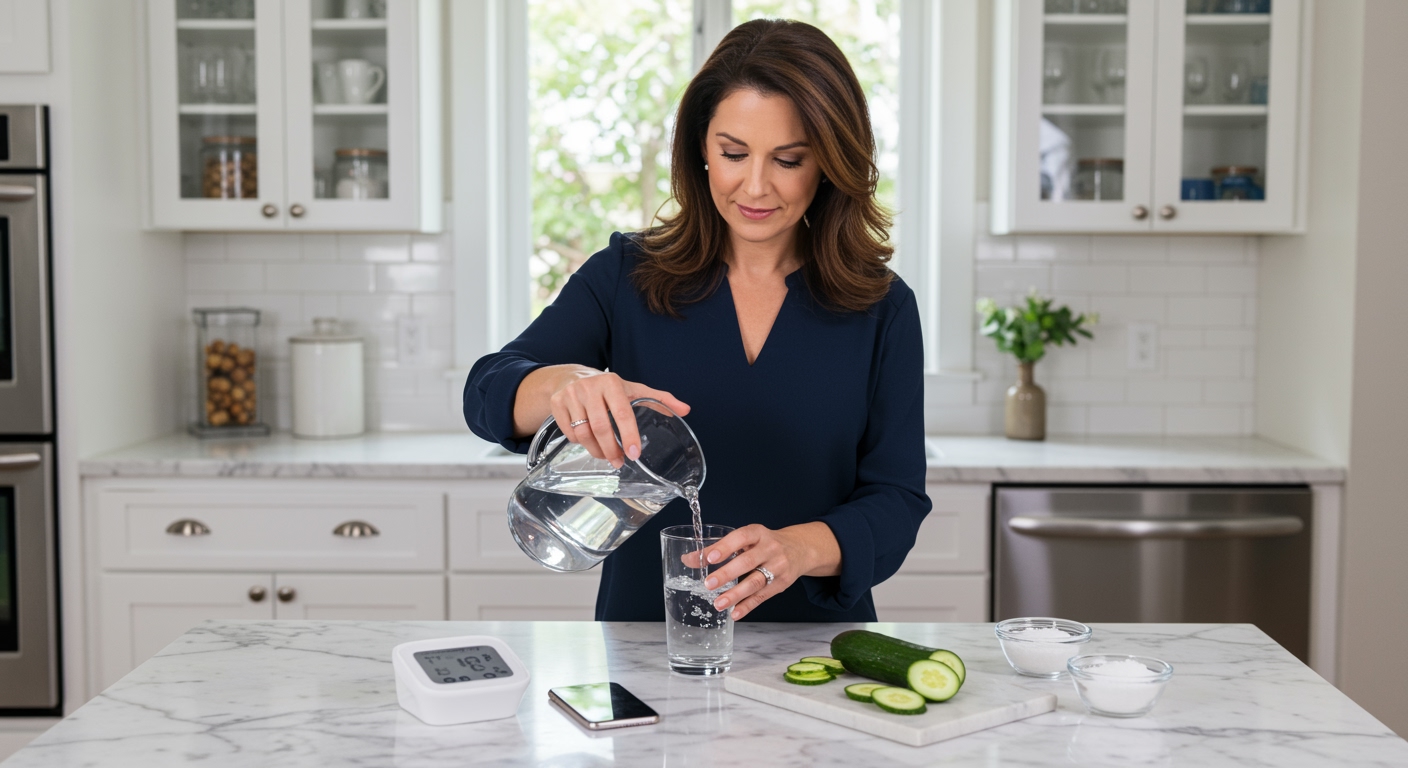✪ Key Takeaway: Herring can help raise low blood pressure through its sodium content and omega-3 fatty acids that support heart function.
Introduction
Your doctor just told you that your blood pressure is too low, and now you are wondering what foods might help.
You have heard conflicting advice about fish and blood pressure, leaving you confused about whether herring could be part of your solution.
Hi, I am Abdur, your nutrition coach, and today I am going to explain exactly how herring affects low blood pressure and whether it deserves a place on your plate.
What Makes Herring Different From Other Fish?
Herring stands out from other fish because of its unique nutritional profile that directly impacts blood pressure regulation.
This small, oily fish contains significantly more sodium than most other seafood options, with about 90 milligrams per 100-gram serving.
The sodium content becomes even more important when you consider that people with low blood pressure often need to increase their salt intake under medical supervision.
Herring also provides an exceptional amount of omega-3 fatty acids, particularly EPA and DHA, which support cardiovascular function and blood vessel health.
These omega-3s help your heart pump more efficiently and can improve overall circulation, which becomes crucial when your blood pressure runs consistently low.
The combination of natural sodium and heart-healthy fats makes herring a potentially valuable food for people managing hypotension.
✪ Fact: Herring contains more omega-3 fatty acids per serving than salmon or tuna.
How Does Herring Affect Your Blood Pressure Mechanisms?
Your blood pressure depends on several mechanisms that herring can influence through its nutritional components.
The sodium in herring helps increase blood volume by encouraging your kidneys to retain more water, which can raise blood pressure in people with hypotension.
This mechanism works because sodium creates an osmotic effect that draws water into your bloodstream, increasing the total volume of fluid your heart needs to pump.
The omega-3 fatty acids in herring support your heart muscle function, helping it contract more effectively with each beat.
These healthy fats also help maintain the flexibility of your blood vessels, preventing them from becoming too rigid or constricted.
Herring provides high-quality protein that your body uses to build and repair blood vessels and heart tissue.
The B vitamins in herring, particularly B12 and niacin, support proper nerve function and help regulate the signals that control your heart rate and blood vessel tone.
✪ Pro Tip: Eat herring with whole grain crackers to add complex carbohydrates that support steady energy levels.
What Are The Best Ways To Include Herring In Your Diet?
The way you prepare and eat herring can significantly impact its effectiveness for managing low blood pressure.
Pickled herring offers the highest sodium content, making it potentially the most beneficial option for people with hypotension who need to increase their salt intake.
Fresh herring fillets provide excellent omega-3 content with moderate sodium levels, making them suitable for regular consumption.
You can grill, bake, or pan-fry fresh herring with herbs and a pinch of sea salt to enhance both flavor and sodium content.
Smoked herring contains concentrated nutrients and higher sodium levels, but you should consume it in smaller portions due to its intense flavor and salt content.
Canned herring in oil provides convenience and good nutritional value, though you should check the sodium content on different brands.
Aim for 2-3 servings of herring per week, with each serving being about 3-4 ounces, to get consistent benefits without overdoing the sodium intake.
✪ Note: Always consult your doctor before significantly increasing sodium intake for low blood pressure management.
Are There Any Risks Or Considerations With Herring?
While herring can be beneficial for low blood pressure, you need to consider several important factors before making it a regular part of your diet.
People with kidney problems should be cautious about increasing sodium intake from any source, including herring, as their kidneys may not handle the extra salt effectively.
If you take blood pressure medications, adding more sodium to your diet could interfere with how these drugs work in your system.
Some people experience digestive upset when they first start eating more fish, especially oily fish like herring, so start with smaller portions.
Herring contains purines, which can be problematic for people with gout or those who need to limit uric acid production.
The mercury content in herring is generally low compared to larger fish, but pregnant women should still monitor their total fish intake.
Always choose herring from reputable sources to minimize the risk of contamination and ensure you get the highest quality nutritional benefits.
✪ Fact: Herring has one of the lowest mercury levels among all commonly consumed fish species.
The Bottom Line
Herring can indeed be helpful for people with low blood pressure due to its natural sodium content and heart-supporting omega-3 fatty acids.
Smart nutrition choices work best when they fit your individual health needs and lifestyle, so herring might be exactly what your low blood pressure management plan needs.
I would love to hear about your experiences with herring or any questions you have about managing low blood pressure through nutrition, so please share your thoughts in the comments below.
References
At NutritionCrown, we use quality and credible sources to ensure our content is accurate and trustworthy. Below are the sources referenced in creating this article:





